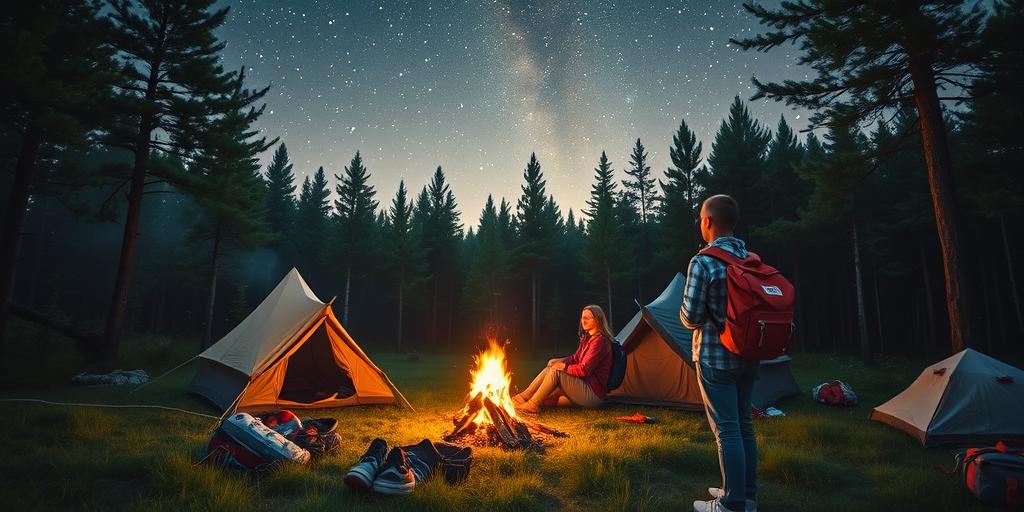The call of the wild can be a powerful one, but the cost of a wilderness survival trip can seem daunting. But what if we told you that you can experience the thrill of living off the land without breaking the bank? With a little planning and ingenuity, a budget survival trip can be a reality, allowing you to connect with nature and push your limits without emptying your wallet.
Wilderness Survival Trips on a Budget: 2024 Edition
Introduction
The desire to disconnect from the digital world and reconnect with nature is stronger than ever. But for many, the thought of a wilderness survival trip evokes images of expensive gear and pricey guided tours. Fear not, adventure seekers! With careful planning and a few budget-friendly strategies, you can experience the beauty and challenge of wilderness survival without sacrificing your financial well-being. This guide will equip you with the knowledge and tips you need to embark on an unforgettable journey, proving that a budget wilderness survival trip can be both rewarding and achievable.
Planning Your Trip
Choosing a Destination
The first step in planning your affordable wilderness survival vacation is choosing the right destination. Consider factors like accessibility, proximity to amenities, and the type of environment you want to experience. National forests and state parks often offer affordable camping options, while areas with established hiking trails and access to water sources can simplify your logistics. Websites like Recreation.gov and AllTrails can help you find campsites and trails that fit your budget and skill level.
Setting a Budget
Before you start buying gear, it’s crucial to set a realistic budget for your cheap wilderness survival getaway. Factor in the cost of transportation, camping fees, food, and gear. Remember that every dollar you save on one aspect of your trip can be allocated to another, like upgrading your gear or enjoying a special treat while on your adventure.
Essential Gear
While you can always find ways to minimize gear costs, don’t skimp on the essentials. A reliable tent, sleeping bag, sleeping pad, and first-aid kit are non-negotiable for your safety and comfort. Look for affordable yet durable gear from reputable brands, and consider buying used or renting items you won’t use frequently.
Budget-Friendly Tips
Camping in Designated Areas
Camping in designated campgrounds can save you money on permits and provide access to amenities like restrooms and water sources. Many campgrounds offer basic sites for a reasonable price, allowing you to focus your budget on other aspects of your trip.
Utilizing Free Resources
The wilderness offers a wealth of free resources for your budget wilderness survival trip. Learning to identify edible plants, find natural shelters, and purify water can significantly reduce your reliance on expensive supplies. Invest time in learning these skills before your trip through books, online resources, and even local survival workshops.
Cooking Your Own Meals
Cooking your own meals is a simple way to save money on food costs. Pack non-perishable items like rice, beans, and oats, and supplement with dehydrated fruits and vegetables for a balanced diet. Cooking over a campfire adds to the wilderness experience and reduces your reliance on fuel-powered stoves.
Minimizing Gear Costs
There are numerous ways to minimize gear costs without sacrificing quality. Look for sales and discounts on gear, consider buying used equipment in good condition, and borrow items from friends or family. If you’re planning a multi-day trip, consider packing lighter to avoid unnecessary weight and bulk, which can translate to smaller and more affordable backpacks.
Safety Considerations
Weather and Terrain
Wilderness survival trips can be unpredictable, so it’s essential to check weather forecasts and be prepared for potential changes. Understand the terrain you’ll be navigating and choose trails that match your skill level. Pack appropriate clothing for all types of weather and bring layers for flexibility.
Wildlife Encounters
While wildlife encounters can be thrilling, it’s important to be aware of potential dangers and take precautions. Learn about the animals that inhabit the area you’re visiting and take steps to avoid encounters. Carry bear spray or other deterrents if necessary, and be mindful of your surroundings.
Emergency Preparedness
Always have a plan for emergencies. Inform someone of your itinerary, pack a first-aid kit with essential medications, and learn basic survival skills like starting a fire, building a shelter, and signaling for help. Having a satellite phone or personal locator beacon can provide vital communication in remote areas.
Conclusion
Embarking on a budget survival trip requires planning, resourcefulness, and a willingness to embrace the challenges and rewards of the wilderness. By choosing the right destination, setting a realistic budget, and utilizing free resources, you can experience the magic of nature without breaking the bank. Remember to prioritize safety, learn basic survival skills, and enjoy the journey! This adventure will test your limits, foster self-reliance, and create memories that will last a lifetime.




